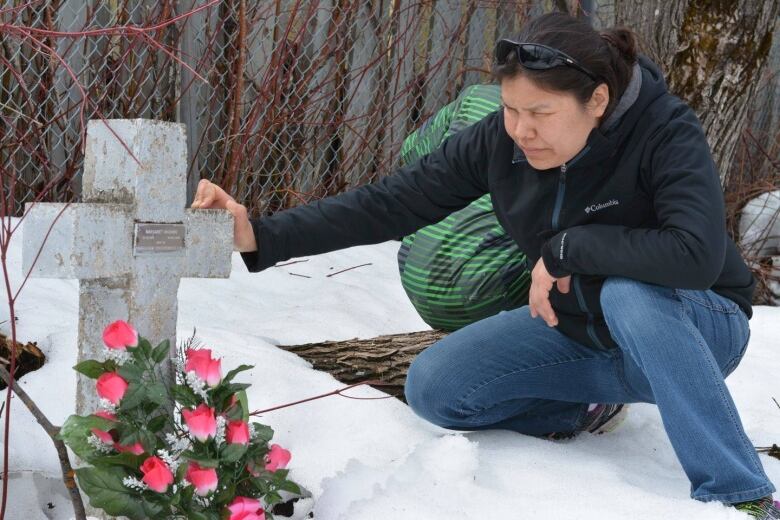First Nation remembers devastating flood in northern Ontario, 30 years later
Anniversary difficult for Pam Chookomoolin, who lost her mother that day

Thirty years ago this weeka flood wiped out a remote northern Ontario community situated on the Winisk River near the coast of Hudson Bay. The settlement is the home of Weenusk First Nation.
That same year the community resettled further up river, but the tragic Winisk flood of 1986 is a reminder of what communities along the James Bay must face every spring, when the ice starts to melt and river water starts to rise.
Remembering the tragic flood of 1986 is difficult for the people fromPeawanuck.

Chookomoolin was seven years old when the flood hit, and the scene she describes sounds straight out of a movie.
"We were terrified, because we could see the ice coming towards the town, climbing over the riverbank," said Chookomolin.
"Everybody usually goes down to the bank to look at it, and I guess they weren't expecting that to happen, because everybody was running back, including my mother."
Chookomoolin recalls being at home with her two brothers, when her mom rushed in to quickly pack clothes before taking off to her aunt's house. Like many people in the community, Chookomolin's aunt had a boat sitting in her yard, so if water came rushing through town, she and her family could jump in the boat to stay above water.
"By the time we reached the boat the water was already coming, catching up to us," said Chookomolin.
"We managed to jump in, but not everybody go into the boat, because the water had already hit us it knocked some people into the water. My mother was one of them the last time I saw her she was in the water. Everything happened so fast."
Chookomolin's mother was one of the two people who died during the flood.
Evenin the boat, Chookomoolin says they still weren't safe.
"The boat tipped sideways and some people went flying off, and I was still stuck in there with two of my cousins," said Chookomolin.
"After it was on its side, it made it crack in half, and it was just getting crushed with ice."
Waiting to be rescued
Once the ice stopped moving, Chookomoolin remembers waiting in a shack to be rescued.

Chookomoolin isn't sure how long it took for rescue teams to come to Winisk, but she remembers people were "waving, signaling to the aircrafts."
Once airlifted out, the community was temporarily relocated to the nearby community Attawapiskat. By July 1986 the community returned to the Winisk river region, but resettled 20 miles up river, on higher ground.
The community now goes by the name Peawanuck, which in Cree means flintrock.
"They call it the promised land now, because we're on higher ground, and there's no risk of flooding," said Chookomolin.
Chookomoolin says that, behind the new settlement, there is a channel, which is where the ice flows every year when the water rises during the spring.
To honour the memory of the tragic flood, the community held a day of activities at the school on Monday. The students from the senior class premiered documentaries that they made, and performed songs, including James Bay's Hold Back the River a song Chookomoolin says reminds her of her mother.
Building a better future
Hopefully it will not take another tragedy before other First Nations are given the opportunity to develop safe, healthy and up-to-date communities.-Grand Chief JonathanSoloman
Mushkegowuk council Grand Chief Jonathan Soloman says the Winisk flood of 1986, while tragic, is reminder that this happens every year for communities along the James Bay.
"Other First Nations, including Attawapiskat, Kashechewan and Fort Albany, are also located on flood plains and are at risk every year of being flooded," said Soloman in a press release.
"Hopefully it will not take another tragedy before other First Nations are given the opportunity to develop safe, healthy and up-to-date communities. By remembering and honouring the past we can build a better future together."













_(720p).jpg)


 OFFICIAL HD MUSIC VIDEO.jpg)
.jpg)



























































































